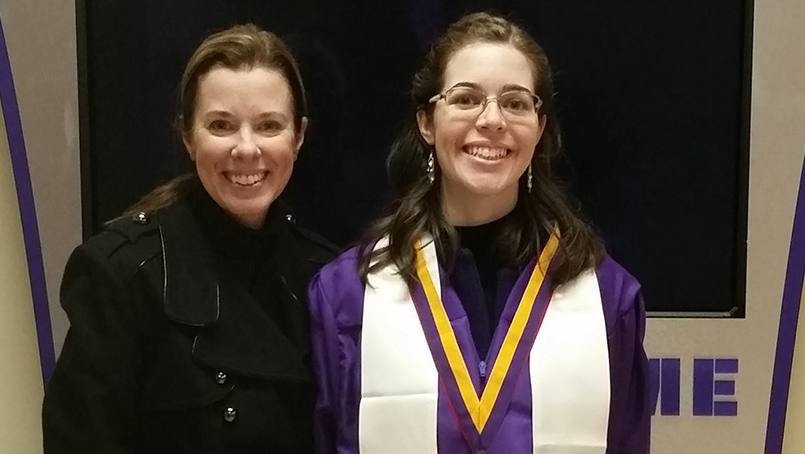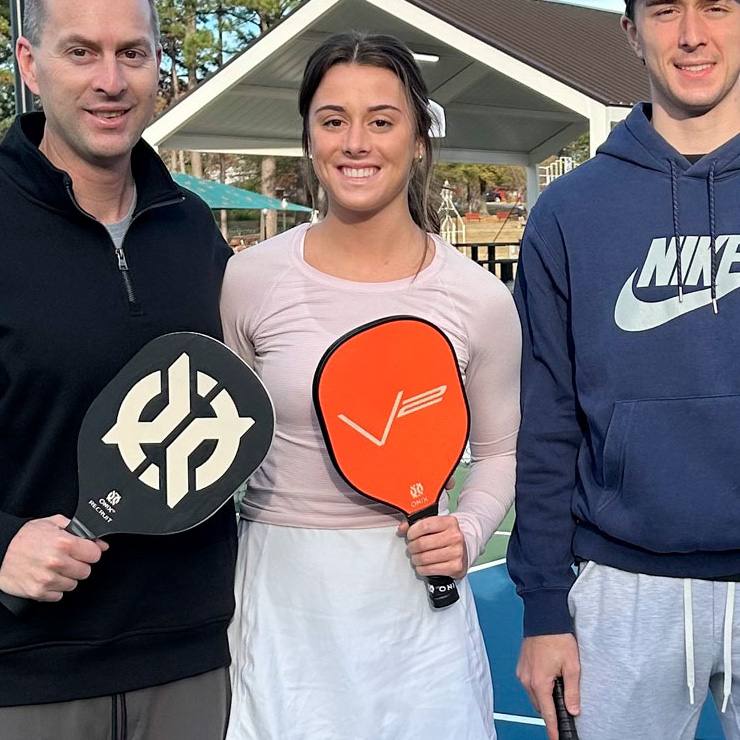Five weeks before she was born, Marissa B. had a stroke in utero. When her mother went into labor, Marissa had another stroke. Diagnosed with epilepsy at birth, Marissa spent her first month of life in the neonatal intensive care unit.
“When she was six months old, they did a brain MRI,” Marissa’s mom, Lisa, says. “They said she would never walk or go to a regular school.”
The strokes took a significant toll on the left side of Marissa’s body. She doesn’t have fine motor skills in her left hand. She has a blind spot in her lower left eye and hearing loss in her left ear. Sensation on her entire left side was also affected.
“I’ve been on seizure meds since birth,” says Marissa, who is now 24 years old.
“The strokes affected a part of my brain, and every time brain waves traveled across that part of the brain, I would have a seizure,”
Due to Marissa's frequent seizures, her mom decided to homeschool Marissa from third through eighth grade. She was able to be involved in a wide variety of extra-curricular activities, including drama, soccer, softball and Tae Kwon Do.
“We did everything we could think of to help her have as normal a life as possible,” Lisa says. That became harder, however, as grew and the seizures increased.
Symptoms become more frequent, intense
When Marissa entered high school, her seizures became more frequent. She had several each day, and she experienced frequent episodes of memory loss.
“Sometimes I would call my mom from school and tell her ‘I see lockers but don’t know where I am,’” Marissa says.
One aspect of the seizures that bothered Marissa most was frequent shaking of her left hand.
“When I think of Mayo, I think of all the wonderful and understanding people who were able to help me and my family get through that difficult time.” — Marissa B.
“When I was a sophomore in high school, my left hand would shake nonstop, to the point that my arm muscles would hurt constantly,” Marissa says. “Sometimes I couldn’t sleep because the shaking would wake me up.”
Looking for a remedy, Marissa saw more than a dozen neurologists in Illinois, where she lives. Some told her and her mom that the shaking in Marissa’s hand was a tremor and not the result of seizures. They said there was nothing more anyone could do.
Searching for better answers
In early 2009, Lisa had an appointment at Mayo Clinic’s Rochester campus. She didn’t want to leave Marissa back in Illinois, so the family headed to Mayo Clinic together.
“We were staying at a hotel and in the middle of the night, Marissa had a long-lasting seizure of her entire left side of her body,” Lisa says. “Then 40 minutes later, she had even a bigger seizure that went on for more than 10 minutes. We ran across the street to Saint Marys Hospital.”
The care team at the hospital connected Lisa and Marissa with Elaine Wirrell, M.D., a Mayo Clinic pediatric and adolescent neurologist.
Dr. Wirrell evaluated Marissa and determined her hand tremors were actually seizures. And she diagnosed Marissa with a rare form of epilepsy, in which seizures occur all the time, called epilepsia parcialis continua. With this diagnosis, Dr. Wirrell recommended two different medications. But over the course of several months, neither curbed Marissa’s seizures.
An innovative new approach
At that point, Lisa and Marissa began exploring other alternatives. They met with Kendall Lee, M.D., Ph.D., a neurosurgeon and director of Mayo Clinic’s Neural Engineering Lab, and Matt Stead, M.D., Ph.D., a Mayo Clinic neurologist
They learned more about the potential for resection surgery. During this surgery, the part of Marissa’s brain causing the seizures would be removed. But because that surgery would leave Marissa paralyzed on her left side, Dr. Lee suggested trying another option, cortical stimulation, instead.
“Because seizures are oscillations — things that repeat, like the heartbeat — I thought the electrical stimulation could block the seizures,” Dr. Lee says. “We didn’t know if it would work because it had never been done.”
“We are now doing more cortical implants because of the success we had with Marissa.” — Dr. Kendall Lee
“We were concerned about the cortical stimulation. But what did we have to lose?” Lisa says. “The worst case would be that it wouldn’t work.”
On Oct. 9, 2009, Marissa went into surgery. Dr. Lee put in temporary electrodes to find the exact location in the brain that was causing her seizures. When he found it, he laid 16 flat electrodes on top of Marissa’s brain to send electrical impulses to it 24 hours a day. A wire was then placed under the skin to her chest where a battery was implanted.
The surgery was a success. Dr. Lee remembers how ecstatic the family and his team were. And that success would lead to others.
“We are now doing more cortical implants because of the success we had with Marissa,” he says.
Enjoying a new-found freedom
Today Marissa is virtually seizure-free, and her quality of life has improved exponentially.
“I am able enjoy life more,” Marissa says. “When we go out to parties and outings, I am able to remember those times and not worry about having a seizure.”
Without seizures, Marissa is able to drive, which gives her much more freedom. In addition, she got a service dog to help her navigate daily activities. The dog was instrumental in enabling Marissa to attend college and complete her degree with an impressive 3.9 GPA.
“Mayo gave me my life back. The surgery was life-changing.” —Marissa B.
“When I think of Mayo, I think of all the wonderful and understanding people who were able to help me and my family get through that difficult time,” Marissa says. “Mayo gave me my life back. The surgery was life-changing.”
“It makes my day to hear that,” Dr. Lee says. “When I have tough days, I remember patients like Marissa. We didn’t know if we could do it, but it’s obvious we had a tremendous impact on Marissa’s life.”
HELPFUL LINKS
- Learn more about epilepsy and cortical stimulation.
- Read about Mayo Clinic’s Department of Neurosurgery.
- Explore Mayo Clinic’s Rochester campus.
- Request an appointment.








